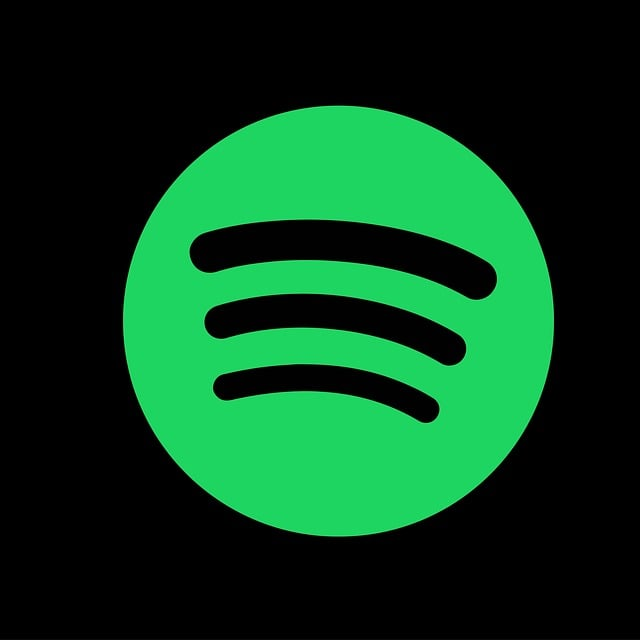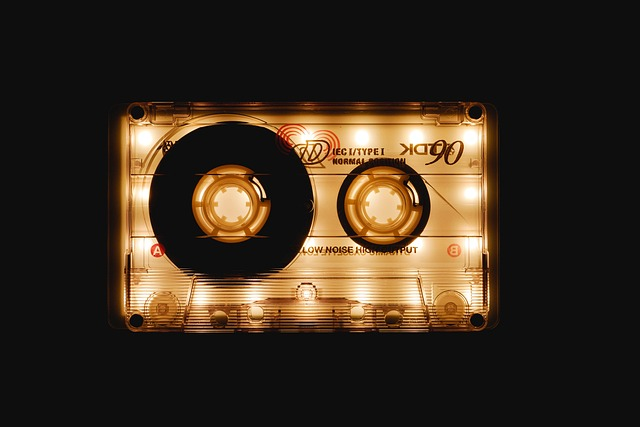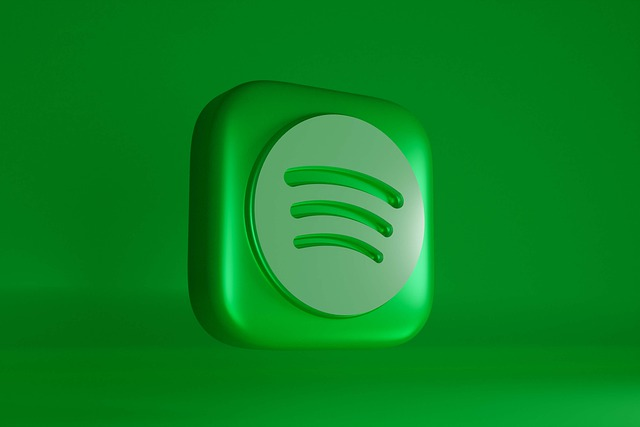YouTube vs Spotify Audio Quality: 2024 Comparison
Written by: Hrishikesh Pardeshi, Founder at Flexiple, buildd & Remote Tools.
Last updated: Jun 10, 2024
YouTube audio quality is often compromised due to its focus on video content, resulting in lower audio quality because of its compression methods. Alternatively, Spotify is dedicated to streaming music and offers higher-quality audio streams.
Comparing the audio quality between YouTube and Spotify, each platform caters to different user needs with distinct audio formats and bitrate options. YouTube employs AAC and Opus codecs, adapting its bitrate based on the user's internet speed, with maximum audio quality at 256 kbps. This setup is adequate for casual listening but may not satisfy those seeking the highest fidelity audio.
On the other hand, Spotify, utilizing the Ogg Vorbis format, offers more consistent audio quality tailored to different subscription levels, with its premium plan delivering up to 320 kbps. This higher bitrate generally provides a richer and more detailed listening experience, making Spotify the preferable choice for audiophiles and dedicated music listeners. While Spotify excels in audio quality, YouTube remains the leader for video content due to its broader and more diverse video offerings. Overall, Spotify is better for high-quality music listening, whereas YouTube offers a superior experience for video content.

Table of Contents
- Audio Bitrate Comparison: YouTube Vs Spotify
- Technical Differences Between YouTube and Spotify Audio Formats
- Audio Quality in Different Plans of YouTube & Spotify
- Which Platform is Better for Music Listening: YouTube or Spotify?
- Which Platform is Better for Video Content: Spotify or YouTube
- FAQs On YouTube vs Spotify Audio Quality
Audio Bitrate Comparison: YouTube Vs Spotify
When comparing the audio quality of popular streaming platforms like YouTube and Spotify, bitrate plays a significant role. Bitrate, essentially the amount of data processed per unit of time in a video or audio stream, directly impacts the sound quality. Generally, higher bitrates mean better quality because more data provides a more accurate representation of the audio file.

1. YouTube Audio Bitrate
YouTube uses Adaptive Bitrate Streaming technology stream music, which automatically adjusts the audio bitrate depending on the user's internet speed. For audio, YouTube mainly employs the AAC format at various bitrates:
Low Quality: Approximately 48 kbps (AAC)
Normal Quality: Around 128 kbps (AAC)
High Quality: Can go up to 256 kbps (AAC)
These bitrates are suitable for casual listening, but they may not satisfy audiophiles seeking high-resolution audio.
YouTube, one of the most popular streaming music discovery platforms globally, utilizes Adaptive Bitrate Streaming (ABS) technology to enhance user experience by dynamically adjusting audio quality based on the user's internet speed. This technology ensures a consistent, buffer-free streaming experience, albeit with variations in audio fidelity that can significantly impact audiophiles and discerning listeners.
Check out the comparison: YouTube Music vs Spotify: Which is Better in 2024?
Understanding YouTube's Adaptive Bitrate Streaming
Adaptive Bitrate Streaming is a delivery technique used by various streaming services, including YouTube, to provide the best possible video and audio quality based on real-time internet bandwidth and connection speed. This method involves encoding the same content at multiple bitrates, which allows the video player to switch between different quality streams seamlessly. When network conditions fluctuate, ABS adjusts the stream quality up or down to match the current speed, thus minimizing buffering and playback interruptions.
Looking to buy a YouTube channel? Check out How to Buy a YouTube Channel: Step-by-Step Guide for 2024
Limitations for Audiophiles
YouTube's high-quality setting offers a substantial improvement over its lower bitrate options, but it might still fall short for audiophiles seeking high-resolution audio. High-resolution audio typically refers to audio files with bitrates much higher than 256 kbps, going up to 1411 kbps or more, as seen in CDs or lossless audio formats like FLAC. These higher bitrates preserve the nuances and dynamic ranges of original recordings, which are often lost in lower bitrate compressions.
Audiophiles argue that the compression artifacts present in AAC, even at 256 kbps, can subtly but noticeably degrade the audio experience, particularly in the case of complex musical arrangements or high dynamic range recordings. The limitations in frequency response, depth, and clarity are areas where dedicated high-fidelity music streaming services with support for lossless audio can outperform the YouTube music show.

2. Spotify Audio Bitrate
Spotify offers more tailored options for audio quality, varying by subscription level:
Standard Quality (Free Plan): Ogg Vorbis format at approximately 96 kbps.
High Quality (Free Plan): Around 160 kbps.
Very High Quality (Premium Plan): Up to 320 kbps.
Spotify’s highest option at 320 kbps delivers a richer, more detailed sound, particularly noticeable offline listening or with high-quality audio equipment.
Spotify, as a leading music streaming service, differentiates itself by offering varying audio quality settings tailored to different user needs and subscription levels. This ability to choose from different audio bitrates, each corresponding to different levels of audio fidelity, allows users to optimize their listening experience based on their preferences, equipment, and internet connectivity.
Check out Is YouTube Shorts Safer than Tiktok?
Overview of Spotify's Audio Bitrates
Spotify uses the Ogg Vorbis format for audio streaming, an alternative to the more common AAC and MP3 formats. Ogg Vorbis, also used by Amazon music, is known for providing more efficient compression at equivalent bitrates, which means it can often deliver better sound quality than other codecs at similar settings.
Standard Quality (Free Plan)
At the entry level, Spotify's free plan offers audio streaming at approximately 96 kbps in the Ogg Vorbis format. This bitrate is generally considered sufficient for casual listening, especially in environments where high fidelity is not the primary concern, such as during commutes or in noisy backgrounds. The compression at this level is noticeable to audiophiles and can be distinguished from higher bitrates, especially in the loss of clarity in higher frequencies and the depth of the soundstage.
High Quality (Free Plan)
The next tier, available also on the free plan, is the high-quality setting that streams music at around 160 kbps. This offers a noticeable improvement over the standard quality, reducing compression artifacts and providing a clearer and more enjoyable listening experience. It strikes a balance between data usage and sound quality, making it a popular choice for everyday music streaming in environments where slight compression is acceptable.
Very High Quality (Premium Plan)
For the most discerning listeners, Spotify's premium plan offers the "Very High Quality" setting, which streams music at up to 320 kbps. This is the highest standard for MP3 streaming and is akin to the audio quality typically found on CDs.
At this bitrate, the audio is rich and detailed, allowing the intricacies of the music—such as the subtle brush of a drumstick or the breath between vocal phrases—to be clearly heard. This setting is particularly beneficial for those with high-quality audio equipment, where the capabilities of the hardware can be fully utilized to appreciate the depth and range of the sound.
Benefits of Higher Bitrates
The primary benefit of higher bitrates in audio streaming is the reduced loss of fidelity. As the bitrate increases, the amount of data that can describe the audio signal also increases, resulting in better representation of the original recording. This is crucial for maintaining the nuances of complex musical compositions and can significantly enhance the listener's experience to play music by providing a more immersive and emotionally engaging listening session.
Considerations for Audiophiles
While Spotify's 320 kbps streaming is highly regarded, audiophiles who seek an even more authentic audio experience might look towards services offering lossless audio formats like FLAC, which do not lose any data from the original audio file and can provide bitrates upwards of 1000 kbps. These formats are preferred for critical listening, where the preservation of every audio detail is crucial.

Technical Differences Between YouTube and Spotify Audio Formats
YouTube and Spotify utilize different audio codecs to optimize audio tracks their streaming services. YouTube primarily employs Advanced Audio Coding (AAC) and, to a lesser extent, the Opus codec. AAC, a part of the MPEG-4 standard, is highly efficient, providing superior audio quality at lower bitrates compared to the older MP3 format.
It is favored for its ability to deliver clear audio across a range of bitrates, making it ideal for various streaming scenarios. Opus, on the other hand, excels in streaming both music and voice audio at very low bitrates, offering versatility for different types of content.
Spotify uses the Ogg Vorbis format, an open-source and patent-free codec, distinguishing itself by being optimized for high-quality audio streaming. It performs particularly well at higher frequencies compared to AAC, providing a nuanced audio experience download music that is often preferred by audiophiles with sophisticated audio setups.
Although the differences between Ogg Vorbis and AAC might be subtle to the average listener, they become more pronounced on high-end audio equipment, making Spotify’s choice ideal for delivering a richer listening experience. This strategic use of different codecs underlines how each platform tailors its technology to meet specific user needs and preferences in audio consumption.

YouTube Audio Formats
YouTube, as one of the largest video streaming platforms globally, employs various technologies to optimize its audio streaming capabilities. Among these, the use of Advanced Audio Coding (AAC) and the Opus codec stands out due to their efficiency and superior performance across a broad spectrum of bitrates.
Advanced Audio Coding (AAC)
AAC is integral to the YouTube music show's audio strategy. As part of the MPEG-4 standard, AAC is designed to be the successor to the MP3 format, offering better sound quality at similar or even lower bitrates. This efficiency makes AAC highly suitable for streaming applications where bandwidth may vary. AAC's ability to compress digital audio files with minimal loss of sound quality allows the YouTube music app to deliver a consistently good audio experience even in constrained network conditions.
AAC supports a wide range of bitrates, from below 128 kbps to over 320 kbps. This adaptability ensures that YouTube music excels and videos can offer satisfactory audio quality to users with varying internet speeds and data plans. By using AAC, YouTube ensures that its content is accessible and enjoyable, with decent sound quality for casual listeners and enough fidelity for more discerning ears within the limits of the platform’s streaming context.
Opus Codec
While AAC covers a broad application range, YouTube also utilizes the Opus codec, particularly noted for its performance with voice audio at extremely low bitrates. Developed by the Internet Engineering Task Force, Opus is a free, open-source audio codec designed for a wide range of interactive real-time applications, from video conferencing to online gaming.
Opus is unique in its versatility, combining the features of both speech codec technology and music compression. It can adjust to bitrates from as low as 6 kbps to as high as 510 kbps.
For YouTube, the use of Opus is particularly advantageous in content where voice clarity is paramount, such as podcasts, lectures, and live interviews. Its ability to maintain clarity and reduce latency even at low bitrates makes it an excellent choice for content creators who prioritize vocal precision and articulation.
Implications for Content Delivery
The choice of AAC and Opus by YouTube highlights the platform's commitment to providing a seamless and adaptable user experience. AAC's efficiency at lower bitrates helps in reaching a broader audience by minimizing buffering and reducing data usage, which is crucial for users in areas with limited connectivity or data caps. Meanwhile, the Opus codec’s strengths ensure that specialized content, which often relies heavily on speech, is delivered with high clarity and minimal delay.
These codecs support YouTube's vast and diverse content and music library well, ensuring that whether a user is watching a high-definition music video, a live gaming broadcast, or a simple vlog, the audio quality is optimized to enhance overall viewer satisfaction. By leveraging these advanced audio codecs, YouTube not only meets current streaming demands but also positions itself to adapt to future developments in digital audio technology.

Spotify Audio Formats
Spotify, a leader in the music streaming industry, employs the Ogg Vorbis audio format to deliver its extensive catalog of music to users around the globe. This choice apple music, is significant and sets Spotify apart in a market where many competitors opt for more common formats like AAC or MP3. Ogg Vorbis, known for its high-efficiency and open-source nature, plays a crucial role in Spotify's ability to offer high-quality audio streaming experiences.
What is Ogg Vorbis?
Ogg Vorbis is an audio compression format that is free from patent restrictions, making it an attractive choice for technology companies looking to avoid licensing fees associated with other codecs like MP3 or AAC. It was designed by the xipg Foundation, which promotes open and royalty-free multimedia codecs. The format supports a variety of bitrates, making it highly versatile for different listening scenarios.
Audio Quality and Performance
Ogg Vorbis is particularly noted for its superior handling of higher frequencies, which can result in a clearer, more defined audio experience, especially in complex musical tracks where multiple instruments and sounds are present. This capability makes it ideal for preserving the nuances of music, ensuring that everything from the deep bass of electronic music to the high pitches of classical symphonies is rendered with clarity and precision.
For Spotify, using Ogg Vorbis means they can offer an enhanced audio experience at competitive bitrates. For instance, Spotify streams at bit rates up to 320 kbps for premium subscribers, which is generally regarded as near CD-quality audio. This high level of quality is particularly beneficial for users with high-end audio equipment, where the capabilities of Ogg Vorbis can be fully appreciated, allowing audiophiles and discerning listeners to experience music with all the depth and details intended by the artists.
Audio Quality in Different Plans of YouTube & Spotify
The audio streaming quality offered by YouTube and Spotify varies significantly depending on the subscription plan, catering to different user needs and preferences. On YouTube, the free service provides audio at a standard quality capped at 128 kbps using the AAC codec, which is adequate for general listening but may not satisfy those seeking high-fidelity sound. For users who prioritize better audio and higher sound quality, YouTube Premium offers an enhanced experience with audio streaming up to 256 kbps AAC, providing clearer and more detailed sound.
Spotify, on the other hand, presents a more pronounced differentiation in audio quality between its plans. The free version streams music at 96 kbps in the Ogg Vorbis format, suitable for casual listening and users with less demanding audio quality needs.
For audiophiles and those with high-end audio systems, Spotify Premium provides a superior audio experience with streaming capabilities up to 320 kbps. This high bitrate allows for richer, more detailed audio playback, making it a preferred choice for users looking to get the most out of their music listening experience. Both platforms tailor their audio offerings to accommodate both casual listeners and more discerning audiophiles, ensuring accessibility and satisfaction across a broad spectrum of users.
YouTube
YouTube Premium offers enhanced audio quality plans through its music streaming service, YouTube Music. Here’s a breakdown of the audio quality options available with both YouTube music and Premium:
Low: This setting uses approximately 48 kbps AAC (Advanced Audio Codec). It's designed to consume minimal data and is suitable for users with limited internet bandwidth.
Normal: This setting streams at around 128 kbps AAC, providing a balance between audio quality and data usage. It is generally adequate for casual listening and is comparable to the standard audio quality found on many streaming platforms.
High: This setting streams at approximately 256 kbps AAC, offering a significant improvement in audio quality compared to the lower settings. This bitrate is sufficient for most users and provides a richer, more detailed listening experience.
Spotify
Spotify’s audio quality also varies by subscription:
Free users experience standard audio quality at 96 kbps, which is decent for casual listening.
Premium users enjoy higher quality audio at 320 kbps, which is quite perceptible, especially on better audio systems.
Which Platform is Better for Music Listening: YouTube or Spotify?
Spotify is better for music listening compared to YouTube. Spotify offers higher audio quality with its premium plan delivering up to 320 kbps using the Ogg Vorbis format, which provides a richer and more detailed listening experience. Additionally, Spotify is dedicated to streaming music and offers a more consistent audio quality tailored to different subscription levels. YouTube music's free plan, while offering a maximum audio quality of 256 kbps, primarily focuses on video content and may not satisfy those seeking the highest fidelity audio.
Which Platform is Better for Video Content: Spotify or YouTube
YouTube is better for video content compared to YouTube. As a platform primarily designed for video sharing, YouTube offers an extensive library of videos across various genres, including music videos, tutorials, documentaries, vlogs, and live streams. YouTube's video quality ranges from standard definition (SD) to high definition (HD), and even 4K, providing a versatile viewing experience that caters to different user preferences and internet speeds.
YouTube also supports user interaction through comments, likes, and shares, fostering a community around video content. The platform’s recommendation algorithm is designed to suggest videos based on user interests and viewing history, enhancing the discovery of new and relevant content. Moreover, YouTube’s integration with Google services makes it easily accessible across multiple devices, including smartphones, tablets, smart TVs, and web browsers, allowing users to watch videos anytime, anywhere.
Spotify, on the other hand, is primarily a music streaming service with a focus on audio content. While Spotify does offer some video content, such as music videos, podcasts, and video podcasts, its library is significantly smaller compared to YouTube. The video experience on Spotify is also less integrated, with limited options for user interaction and content discovery compared to YouTube.
Overall, YouTube's extensive video library, high-quality streaming options, interactive features, and seamless integration across devices make it the superior platform for video content. Spotify excels in many popular music streaming services but does not match YouTube's breadth and depth in video offerings.
FAQs On YouTube vs Spotify Audio Quality
What is the highest audio quality offered by YouTube and Spotify?
YouTube offers up to 256 kbps AAC, while Spotify goes up to 320 kbps Ogg Vorbis.
Can you notice the difference in audio quality between YouTube and Spotify?
Yes, especially if you are using high-quality headphones or speakers, Spotify’s higher bitrate options provide a clearer, more detailed audio experience.
Which platform is more cost-effective for high-quality audio streaming?
Spotify offers more consistent high-quality audio options in its Premium plan, which is generally considered more cost-effective for audiophiles compared to YouTube Premium.
Do YouTube and Spotify use the same audio formats?
No, YouTube mainly uses AAC and Opus, while Spotify uses Ogg Vorbis.